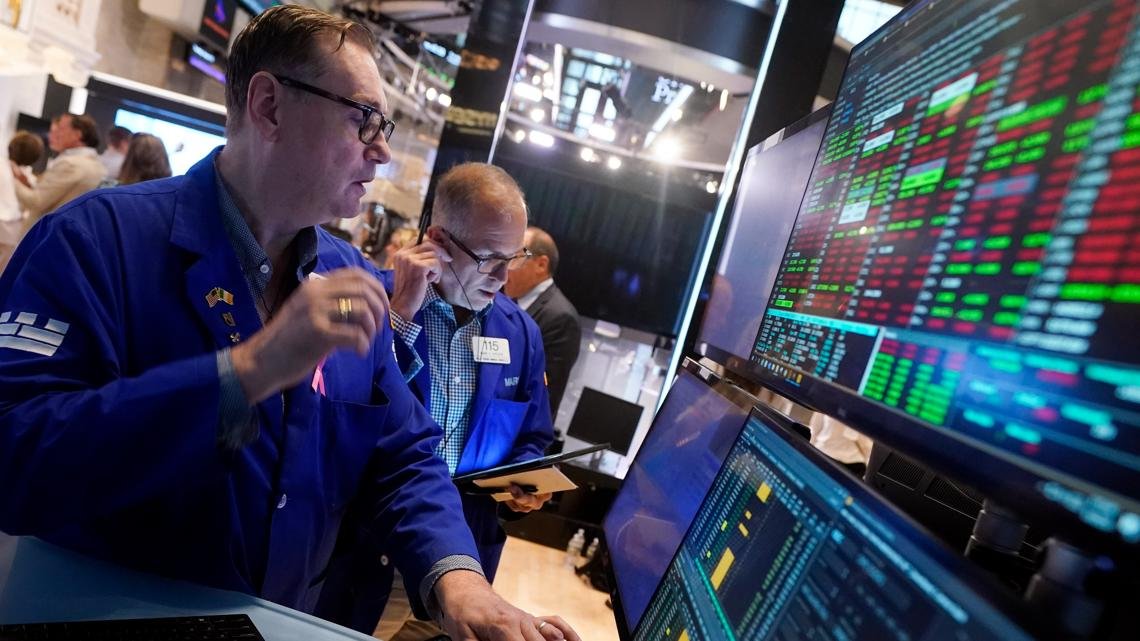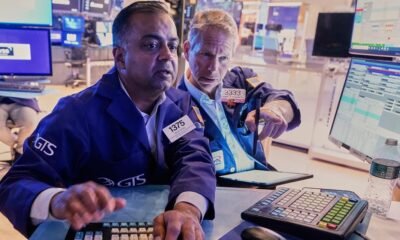Business
Wall Street Rebounds Sharply After Nearly Two-Year Slump

The majority of stocks are on the rise, reversing the sharp drops seen the previous day.
NEW YORK — U.S. stocks are rebounding, bringing some stability back to Wall Street. This follows Japan’s market surge on Tuesday, which recouped substantial losses from its worst day since 1987.
The S&P 500 climbed 1.6% during midday trading, potentially ending a challenging three-day losing streak. The index had fallen more than 6% due to reports indicating economic slowdowns caused by the Federal Reserve’s prolonged high-interest rate policy aimed at curbing inflation.
By 11 a.m. Eastern time, the Dow Jones Industrial Average had increased by 480 points, or 1.2%, and the Nasdaq composite was up by 1.7%. Stocks ranging from smaller domestic companies to large multinational corporations showed gains, contrasting sharply with the previous day’s declines.
Several major U.S. firms reported stronger-than-expected profits, igniting the market. Kenvue, the maker of Tylenol and Band-Aids, saw a 12.7% surge in share value due to higher profit margins, partly driven by increased product prices. Uber also impressed, posting a 7.9% rise following strong quarterly profit results.
Caterpillar recovered from early losses, gaining 3.8% after posting stronger earnings, despite lower-than-expected revenue figures.
Apart from weak U.S. economic data, “a perfect storm” of technical market factors sped up recent market tumbles, according to Barclays strategists Stefano Pascale and Anshul Gupta. A pivotal issue arose in Tokyo, where the Bank of Japan’s interest rate hike disrupted popular investment strategies, prompting an exit from global investments and accelerating market declines.
Japan’s Nikkei 225 soared by 10.2%, reclaiming a significant portion of its 12.4% loss from the previous day, the worst since the Black Monday crash in 1987. Tokyo stocks rebounded as the Japanese yen’s value stabilized against the U.S. dollar after several days of volatility.
“The speed, the magnitude, and the shock factor clearly demonstrate how much of the moves were driven by traders’ positions,” noted Barclays strategists. This suggests that market actions could stem from more than just U.S. economic concerns.
Nonetheless, some experts remain cautious. Barry Bannister, Chief Equity Strategist at Stifel, warned of potential further declines due to a sluggish U.S. economy and persistent inflation. He predicted these factors would be more pronounced in the year’s latter half, cautioning that the U.S. stock market remains overvalued compared to bond yields and other financial metrics.
“The stock market’s dip is not a blip,” Bannister asserted, advising against reentering the market too soon.
Bannister had long forecasted a “correction” in U.S. stock prices, recognizing in July that his earlier prediction was premature. This came shortly before the S&P 500 hit an all-time high and then began descending.
Despite recession fears, the U.S. economy continues to grow, and a recession remains uncertain. The U.S. stock market has performed well this year, and the Federal Reserve has room to cut interest rates if the job market weakens significantly.
The S&P 500 achieved numerous all-time highs this year, partly fueled by enthusiasm around artificial intelligence technology. Critics argue this enthusiasm has sometimes driven stock prices excessively high.
The focus has been on companies like Nvidia and Apple, within the “Magnificent Seven” Big Tech stocks, which strongly contributed to the S&P 500’s record highs. Fueled by AI mania, these achievements overshadowed struggling market sectors burdened by high interest rates.
Recent underwhelming profit reports, starting with Tesla and Alphabet, fed pessimism and pulled Big Tech stocks down. Nvidia, despite dropping nearly 19% from early July to Monday, rose 4.8% on Tuesday, significantly boosting the market. Conversely, Apple fell by another 0.8%, negatively impacting the S&P 500.
In the bond market, Treasury yields were increasing, clawing back some of the steep declines seen since April, anticipating future Federal Reserve interest rate cuts. The 10-year Treasury yield rose to 3.86% from 3.78% on Monday, having briefly dipped below 3.70% amid market fears and speculation of an emergency rate cut by the Federal Reserve.


















